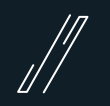Disclaimer: This page illustrates an old process I laid out during my management experience in Bizagi Ltd (circa 2017). Press the button on the right for a more recent sample of my work (Coolblue, circa 2019).
It can be challenging sometimes to show what is it that you do when you work in the UX field. I've been constantly under a lot of NDA's, so much of my actual research, testing and architecture work can't be shown in detail. In here, however, I've taken the liberty of showcasing little pieces of my daily work back in the days when I was a UX Architect.
Preliminar Experience Map made for an upcoming functionality.
In order to understand what a UX Architect does, it's better to explain how my UX Team was composed. Incidentally, I organised the team, based on 'Lean UX' concepts as well as our own needs within the company.
UX Team organization. I'd be the one on top of the circle!
Lean UX states that every development has three main phases: Think, Make and Check, and that was the basis of how I organised the team.
On a normal project, everything starts with me doing user research, personas, experience maps and usability charts for a certain development. Then, our Visual Interaction Designer would implement our visual language onto it. Then while the front-end starts developing, the User-test strategist uses A/B testing either with mockups provided by the VXD, or a dummy prototype created by the DEV, to determine what changes can further optimise the usability. Then, I take the project again, analyse the data and create new iterations of the project; and so on, and so forth.
Personas.
It all starts with personas. Interviews are performed and data is extrapolated to creat 2 to 4 profiles that best suit the company.
Real example of personas made for the company.
Experience maps.
After Personas are profiled, a Experience Map is developed. This is made with much discipline as one's own criteria cannot and shouldn't be mixed up with the persona's behavior we try to emulate.
Actual experience map made after the Personas shown earlier.
Architecture flows.
Usually I develop personas and experience maps based on existing software. But what if the company wants to create something from the ground up?. My architecture flows show how a piece of software is organised as well as how the user would interact with it. It's an integral piece of documentation for both the developer and the designer to understand the extent of the new software.
Architecture flows are a mix of AI Sitemaps, Interaction maps and wireframes. They're integral parts of the preliminar documentation.
Vanguard Design.
Either with personas or with architecture flows, everything will eventually have to feature a fantastic visual design, which, for me (having an extensive background in VD) is the way we create an emotional connection between the user and the product. Based on that premise, I've developed a visual language I call 'Vanguard Design' which is the basis for all the patterns currently used in all products.
Vanguard Design powered visual designs for a number of products.
User testing.
After user-research and the data analyzed through experience maps we develop variations of existing software (using Vanguard Design patterns) in order to submit it to A/B testing. After results come out, I analize data and start developing a following iteration.
Visualisation of data results after A/B testing.
That's it! Proper UX methods and techniques implemented in a big, complex software development company. Considering that company's financial results from the time, I'd say my team's influence has been beneficial.
